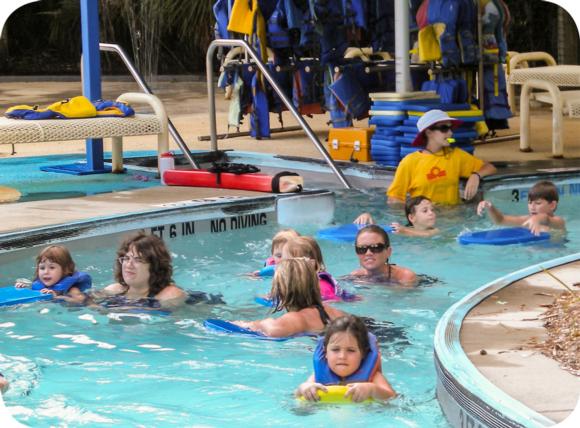Prevention Strategy at Waterparks
This is an excerpt from StarGuard 5th Edition With Web Resource by Jill White.
The waterpark industry has an overall excellent track record of providing safe recreation. The most effective way to reduce the risk of injury to guests enjoying waterpark attractions is to enforce the rules for proper usage consistently and regularly inspect the attraction.
Safety and Use Instructions
Each area or attraction should have safety and use instructions clearly posted for guests. These instructions should answer the following questions for each attraction:
- Must guests be a maximum or minimum height before using this attraction?
- Must guests be a maximum or minimum weight before using this attraction?
- Are certain types of apparel prohibited?
- Must guests use a certain body position (such as feet-first) with this attraction? Are certain body positions prohibited?
- Is there a time or distance requirement between users?
- Is equipment such as tubes or mats required for use of this attraction? Is equipment prohibited from use on this attraction?
The attraction manufacturer usually provides guidelines for use that answer these questions. Site-specific facility policies and procedures and industry best practices support these guidelines. In addition to signs, audio scripts played to guests in line can be an effective backup prevention strategy. You need to know the restrictions and rules for each area or attraction that you lifeguard and enforce these rules with all guests.
Consistency in rule enforcement is important. Consider an example from a guest's point of view: A child does not meet the height requirement, but the dispatcher allows him or her to go down a waterslide. The family plays in the waterpark and returns to the ride when a different dispatcher is on duty. The dispatcher checks the height and tells the child he or she cannot ride. What happens? The guest is upset, the rules seem not to matter, and the lifeguard doing her or his job looks like the bad guy - all of which could have been prevented by consistency. If you are unsure of what a rule is or how to enforce it, call for a supervisor.
Use of Life Jackets
Many waterparks require that children under a certain age or height, as well as all nonswimmers, wear life jackets in wave pools, lazy rivers, and deep-water areas. Laws in some locations require life jacket use. If you work at a facility with a life jacket requirement, you will need to be trained in the site-specific policy and procedure for life jacket sizing, distribution, and monitoring.
Sizing guidance may vary slightly depending upon the style and manufacturer recommendations, but basic sizing instructions include the following:
- First select the right size based on the person's weight. The lifejacket should have a weight range printed on the inside.
- Put the jacket on the person and clip all the buckles or close zippers.
- Adjust any straps, starting at the bottom to obtain a snug, but not too tight fit.
- Pull up on the shoulders. If the lifejacket rides up more than the width of two fingers, readjust the straps or select a smaller size.

A loaner life jacket program can be an effective prevention strategy.
Inspections
The facility where you work should have checklist forms for you to use if you are responsible for inspecting a water attraction. Inspections are usually conducted each morning before opening. Even if you know that the attraction has been inspected, stay alert for problems that may develop during the day. Look for and report to your supervisor any of the following:
- Cracks
- Loose bolts
- Missing or broken pieces
- Nonfunctioning parts
- Unusual noises
- Increased frequency of injury or patron complaints
- Anything different or unusual
The inspection may also include other items such as test riding the attraction to check water-flow levels, confirming working communication systems, and verifying that the attraction is operating correctly.
Besides knowing the rules for using waterpark attractions and inspecting them, you must also adjust your surveillance techniques when guarding in a waterpark.
Attraction Standard Operating Procedures (SOPs)
SOPs should be available to you for each attraction at your facility. The SOP outlines important information including but not limited to these requirements:
- Rider restrictions or requirements (physical and mental)
- Staffing
- Training
- Water flow
- Rider vehicles
- Signage and rules
- Inspections
- Safety procedures
- Emergency procedures
This information will usually be communicated to you through a facility handbook or site-specific training manual.
SHOP

Get the latest insights with regular newsletters, plus periodic product information and special insider offers.
JOIN NOW


